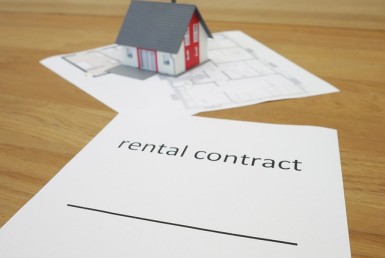The Real Cost of Being a Landlord in Ireland in 2025: Letting Agent Fees, Taxes, and Maintenance Risks

Ireland’s rental market may still be in short supply, but being a landlord in 2025 is far from the easy money it’s often portrayed to be. While media coverage continues to focus on spiralling rents and long viewing queues, many landlords—particularly individual investors and small-scale owners—are quietly feeling the squeeze. The reality is that the financial pressures of property ownership are mounting, and many landlords are reconsidering their position in the market.
With the growth in regulatory obligations, higher costs of upkeep, and tighter scrutiny from Revenue, profit margins are narrowing. We break down the real cost of letting property in Ireland today, from letting agent commissions and landlord taxes to the maintenance traps and legal risks that can catch even experienced investors off guard.
Letting agent fees and property management costs in Dublin and Naas
Most landlords in Ireland—particularly those letting property in Dublin or commuter hubs like Naas—use professional services to manage their rental. Full-service letting agents typically charge between 8% and 12% of the annual rent for tenant sourcing, lease negotiation, and registration. For landlords seeking ongoing management services, a property management company can cost an additional 5% to 10% per annum.
What does that cover? The basics usually include rent collection, maintenance coordination, emergency call-outs, and tenant liaison. But some property management companies in Dublin and surrounding areas now offer more advanced packages—covering BER compliance checks, legal updates, and dispute handling—at a premium.
With tenant expectations rising and legal obligations becoming more onerous, many landlords feel these costs are justified. But for those trying to maximise yield on one or two properties, they can represent a significant dent in income—especially when added to already high estate agent charges for renewals or re-lettings.
Taxes on rental income, PRSI, USC and capital gains for landlords in 2025
Landlords in Ireland must declare all rental income, and while allowable expenses can be deducted, the net profit is subject to income tax at the landlord’s marginal rate—typically 20% or 40%—plus PRSI and the Universal Social Charge. These charges are often misunderstood by first-time landlords who wrongly assume that mortgage interest relief or letting costs eliminate their tax burden entirely.
Then there’s the Local Property Tax, calculated on the value of the property and collected annually, plus the cost of tax advice or accountant services if the landlord is not managing the books themselves.
Capital Gains Tax (CGT) is also in play. Should a landlord sell their property in 2025, any increase in value since acquisition (after allowable costs) will be taxed at 33%. For those who bought in the early 2010s, this could amount to tens of thousands in tax if they exit the market now—especially in high-growth locations like Dun Laoghaire, Dublin 6 or Naas town.
Maintenance, repairs and energy upgrades for Irish rental properties
One of the most underestimated costs for landlords is property maintenance. Even in relatively new properties, annual outgoings for general upkeep—such as plumbing, electrics, appliances, and window repairs—can run to several thousand euro. Older homes present even greater challenges, particularly when it comes to energy efficiency upgrades now expected by most tenants and increasingly incentivised by Government policy.
Replacing windows, insulating attics and walls, upgrading heating systems—all of these come at a cost. And while they may improve BER ratings and attract higher rents, they can also take several years to recoup in real terms.
Fire safety upgrades, including compliant smoke and carbon monoxide alarms, remain essential, especially in multi-unit or older Georgian properties common in central Dublin and Portobello. Most experienced housing agents in Dublin now recommend that landlords set aside a minimum of €2,000 to €4,000 annually for upkeep, even in well-maintained flats or suburban homes.
Legal compliance, RTB registration and landlord responsibilities in 2025
The compliance landscape has changed significantly. Landlords must register all tenancies with the Residential Tenancies Board (RTB), costing €40 per tenancy annually. But that’s just the beginning.
All rental properties must now meet statutory minimum standards covering ventilation, heating, sanitation, and electrical safety. BER certification is mandatory for advertising and must reflect the current condition of the property—not a ten-year-old assessment.
Deposit handling must follow clear legal protocols, and landlords are expected to use approved dispute resolution mechanisms for tenant disagreements. Fines for non-compliance are real and increasingly enforced. RTB inspections are becoming more common, and landlords can no longer assume informal arrangements will go unnoticed.
Letting agents near you may offer compliance services, but they are often billed separately. The cost of legal advice, tenancy mediation, or representation at an RTB hearing can add significant expense to what many consider a straightforward business.
Turnover costs, vacancy losses and insurance for Irish rental properties
Even in high-demand areas like Dublin 7 or Naas, landlords can’t escape the impact of tenant turnover. Every change of tenancy typically involves deep cleaning, minor repairs, and often repainting—especially in furnished lets. Many landlords underestimate the cost of these turnarounds, which can easily reach €1,000 to €2,000 between leases.
There’s also the risk of vacancy. A single month without a tenant in a property with a €2,200 monthly rent equates to an 8.3% annual income loss. Some landlords try to hedge this risk with rental income insurance, but premiums have increased post-COVID and claims can be restrictive.
Landlords letting through online estate agents may find re-letting takes longer if professional photos, listings and tenant screening are not handled proactively. This is where full-service letting agents still offer real value, especially for landlords balancing property management with full-time work.
Landlords in Dublin and Naas: is property still worth it in 2025?
The short answer is yes—but only with the right expectations and expert support. Ireland’s rental yields remain some of the strongest in Western Europe, particularly in fast-growing urban corridors and high-demand school catchment areas. But profitability in 2025 depends less on market rents and more on managing costs, avoiding regulatory pitfalls, and retaining good tenants long-term.
Landlords who approach property as a well-run business, with realistic forecasting and solid estate agent support, can still achieve healthy returns. Those operating on legacy assumptions of low maintenance, minimal tax scrutiny and casual letting arrangements are finding it harder each year.
Get clarity on your property investment with Howley Souhan – Estate agents in Dublin and Naas
Whether you own one flat in Dublin 7 or manage a small portfolio across Naas and Dun Laoghaire, understanding the true cost of letting is essential in 2025. Howley Souhan offers trusted, local expertise across sales, lettings, and property management—helping landlords navigate rising costs, new regulations, and shifting tenant expectations.
Contact us today to speak with an experienced estate agent and get a clear picture of your property’s performance—and its potential.
Royalty free Image from PixaBay to support the Blog Content.




